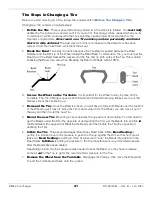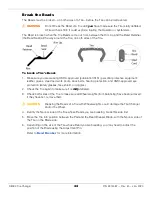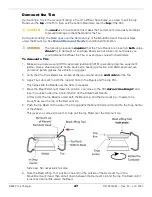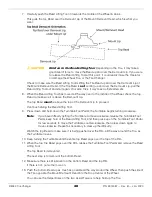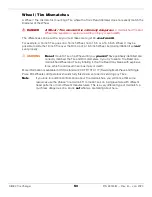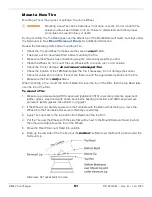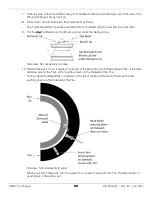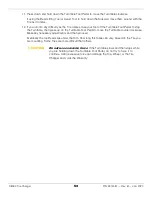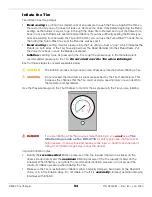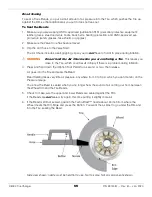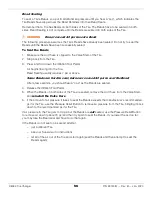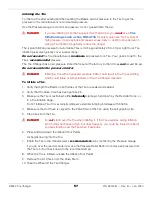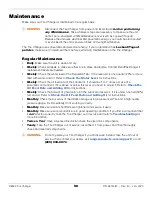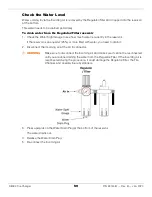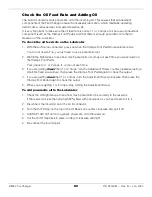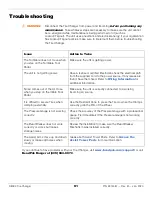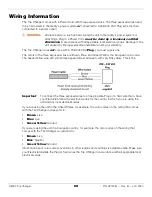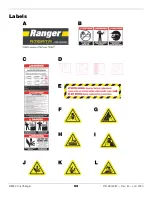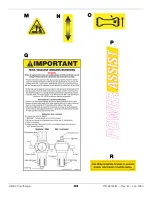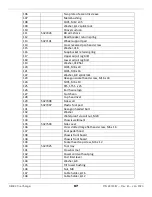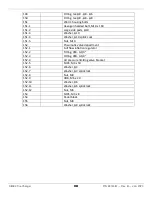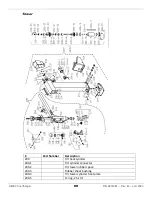
R80EX Tire Changer
54
P/N 5900087 — Rev. B — Jan. 2020
Inflate the Tire
Tire inflation has three stages:
•
Bead
sealing
is putting in a small amount of air pressure to push the Tire up against the Rim so
the rest of the air you put in does not leak out.
Remove the Valve Core before beginning the Bead
sealing
, as that allows more air to go in through the Valve Stem. Remember to put the Valve Core
back in once both Beads are seated (before inflation). If you have difficulty sealing the Beads (you
hear air escaping from between the Tire and the Rim), you can use the Turbo-Blast™ nozzle. Note
that using the Turbo-Blast may seat the Bead as well as seal it.
•
Bead
seating
is putting more air pressure into the Tire until you hear a “pop”, which indicates the
Beads (on both sides of the Tire) have slipped over the Bead Retainer into their Bead Seats.
Put
the Valve Core back in once the Beads are seated
.
•
Inflation
is adding more air pressure to the Tire to get the pressure up to the manufacturer’s
recommended pressure for the Tire.
Do not stand over the Tire when inflating it
.
Each of these stages is covered separately below.
⚠
CAUTION
The inflation process can produce noise. Wear ear protection when inflating a Tire.
⚠
WARNING
Do not exceed the maximum air pressure specified by the Tire manufacturer. This
increases the chances that the Tire could explode, causing injury or even death to
the Operator and bystanders.
Use the Pressure Gauge on the Tire Changer to monitor the air pressure in the Tire you are inflating.
⚠
DANGER
If you are inflating a Tire that requires more than 60 psi, you
must
use a
Inflation Cage such as the RIC-4716
for safety purposes. If a Tire fails at
high pressure, it can explode and cause serious injury or death to anyone near it.
Using a Tire Inflation Cage helps reduce the danger.
Important inflation notes:
•
Identify the
recommended
inflation pressure of the Tire (usually located on a sticker on the
driver-side doorjamb) and the
maximum
inflation pressure of the Tire (usually located on the
sidewall). When inflating, your goal is the recommended inflation pressure; do not exceed the
maximum inflation pressure when inflating the Tire.
•
Make sure the Tire is restrained for inflation: either
internally
clamped, held down by the Restraint
Cone, or in a Tire Inflation Cage. Do not inflate a Tire if it is
externally
clamped; external clamping
interferes with inflation.


